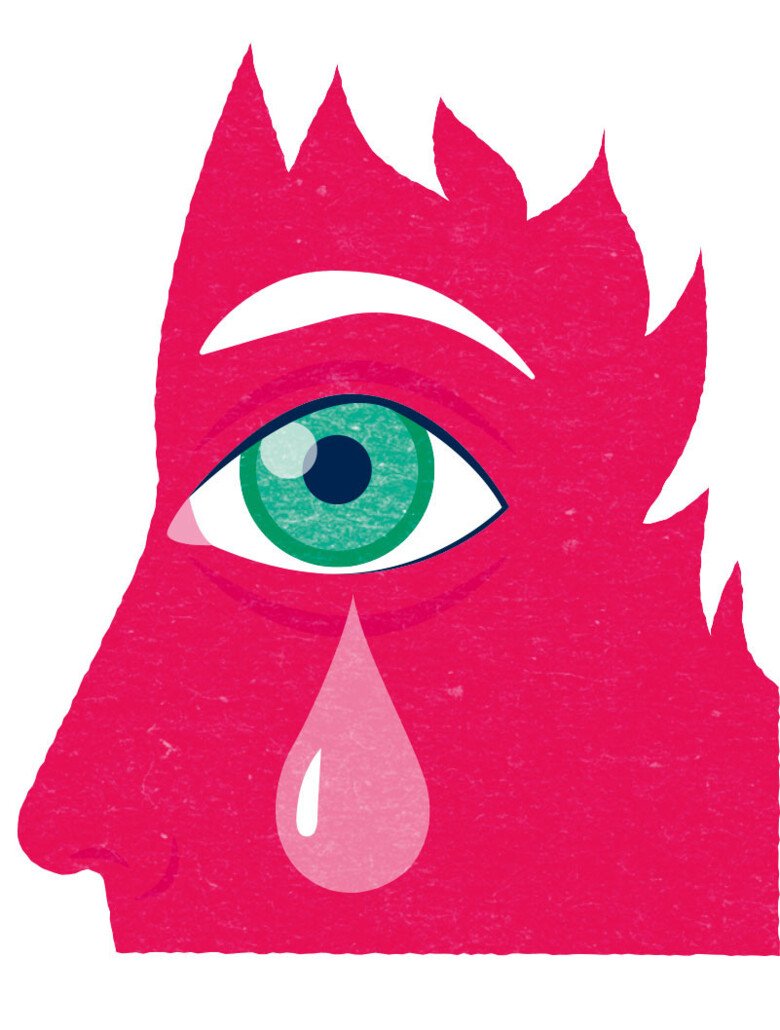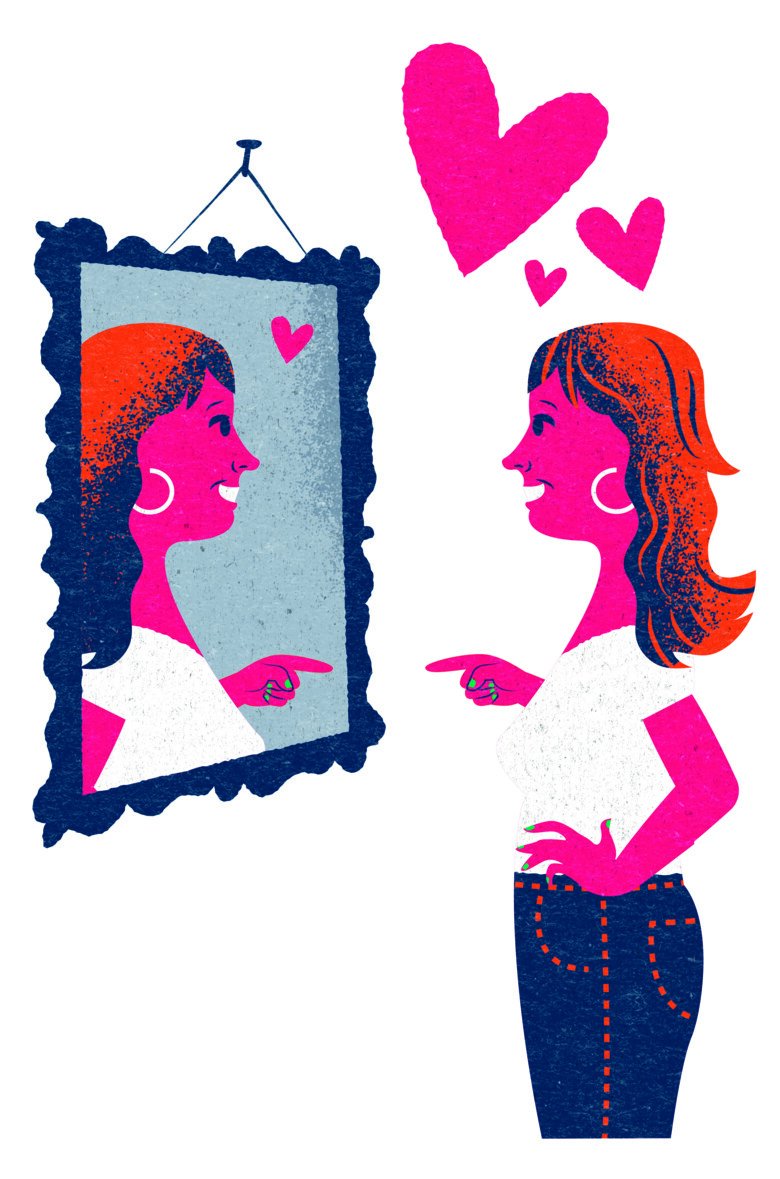A disease with many faces
An eating disorder does not need to be visible on the outside and can affect anyone. Simplified explanatory models have flourished for a long time while victims and their relatives have been groping for answers of their own. Now researchers at Karolinska Institutet are planning to separate fact from fiction.

Text: Ola Danielsson
First published in Swedish in Medicinsk Vetenskap No 4/2017.
FOR SOME PEOPLE, FOOD is one of life's great pleasures and an important source of enjoyment. Others eat mostly as part of their daily routine. Most accept that we simply need to eat in order to survive and feel good.
And then there are those who end up in all-out war with their own eating. An eating disorder can manifest itself in many different ways but always involves a vicious circle of physical and mental illness, sometimes with a fatal outcome.
“Anorexia nervosa has the highest mortality rate of all psychiatric diagnoses. This is in part due to the severe physical consequences of hunger, but also the risk of suicide,” says Cynthia Bulik, professor specialising in eating disorders at the Department of Medical Epidemiology and Biostatistics at Karolinska Institutet and the Center of Excellence for Eating Disorders at the University of North Carolina in the United States. She is also the Director of the newly established Centre for Eating Disorders Innovation at Karolinska Institutet.
Cynthia Bulik has devoted her scientific career to seeking new knowledge about risk factors, causes, and treatments of eating disorders. She and a number of colleagues recently presented nine truths about eating disorders, with the aim of spreading information about what research has determined today and at the same time to dispel some of the myths that have for a long time surrounded the disease. The first truth is that people with eating disorders may look healthy while actually being seriously ill.
“In the case of anorexia nervosa, underweight is part of the clinical picture. But people with bulimia nervosa or binge eating disorder are often of normal weight or overweight and together they constitute the largest group,” says Cynthia Bulik.

Because nothing was known for certain, doubtful or totally inaccurate explanations of eating disorders have also flourished at various times. It has often been difficult to separate the core of the disease from what Cynthia Bulik calls its cultural packaging.
ONE OF THE EARLIEST descriptions of eating disorders concerns the 14th-century nun Catherine of Siena. She fasted for a long time for religious reasons. The people around her were impressed by her seemingly limitless devotion. But a concerned clergy urged her to begin eating again. She reportedly told them that she was ill and could not. Her condition was called anorexia mirabilis, or miraculous self-starvation. But she most likely suffered from what today is called anorexia nervosa and she died of starvation at he age of 33 on 29 April 1380.
In the 1970s the answers were sought in accordance with the spirit of the times in the family environment. Researchers noted that the relationships around individuals with an eating disorder not seldom are characterised by conflict and stress and concluded that a dysfunctional family environment was the root cause of the problem. But many did not recognise themselves at all. Others bought the explanation, leading to guilt and conflicts.
“The notion that it is the family’s fault has caused great damage. Many parents have felt guilty quite unnecessarily. What was not understood earlier was that the disease has a very great impact on the whole family,” says Ata Ghaderi, Professor of Psychology at the Department of Clinical Neuroscience. Today, researchers think exactly the opposite and see the family as part of the solution rather than the problem. In the treatment of young people with eating disorders, the family is involved as an important resource.
“Recent research has also shown that families in which someone suffers from eating disorders are not so special after all. Similar tensions are seen in families where a child suffering from other chronic diseases such as type 1 diabetes,” he says.
TODAY THE PENDULUM has swung from simplistic social models to a combination of psychological and biological risk factors, along with triggering environmental factors. As with many other diseases, most scientists had given up the idea of a simple explanation. Piece by piece, the researchers instead put together a puzzle of many factors that help trigger and maintain the disease. Few or none of the pieces can be found at all with eating disorders, but there is a common overall pattern. Many sufferers are preoccupied with thoughts of their body, food and weight. It is also common to have other psychiatric problems such as depression, anxiety and obsessions. But the sufferers can often feel that there is something else, or at least something more than their thoughts and feelings, that makes it impossible to eat normally.

“Psychological factors are part of the clinical picture. But they alone cannot explain why someone begins to starve him- or herself as with anorexia nervosa; there are stronger physiological mechanisms that are brought into play,” Ata Ghaderi goes on.
The strongest risk factor for eating disorders is slimming. Many people who try to lose weight give up after a while and revert to their usual eating habits. But some react instead with a period of increased eating compared with before they began slimming. This could in turn trigger the person to resume their slimming. If the cycle continues, the person risks getting stuck in a pattern of swings between dieting and overeating. Over time this can turn into binge eating, which is a combination of overeating and a feeling of loss of control over their eating.
A small percentage see their dieting as an unexpectedly positive experience. Instead of irritation and inconvenience, they discover that the negative energy balance, hunger, brings about a sense of calm or even euphoria. Instead of lack of energy, they feel a sense of activation that some channel through physical exercise, which gives them an even greater negative energy balance. Such a person runs the risk of developing anorexia nervosa.
“Dieting is common but few people develop anorexia nervosa. It is also common to eat despite feeling full but only in a few people does this turn into binge eating and a sense of loss of control. We therefore need to learn more about the factors that determine whether an individual develops an eating disorder or not,” says Cynthia Bulik.
WE HAVE KNOWN for a long time that eating disorders are more common in some families and studies of twins carried out by Cynthia Bulik and other researchers show that 40-60 per cent of the risk of developing anorexia nervosa can be explained by genetic factors.
The genetic components do not mean that someone is destined to suffer from the disease; environmental factors are at least as important. “It’s important to study both the biological and the environmental aspects of eating disorders and how they interact,” Cynthia Bulik says.

Which genes are involved has been completely unknown until now. Together with international colleagues, Cynthia Bulik recently conducted a study of abnormalities associated with the disease.
When they analysed the results, the researchers were able for the first time to link the disease to a specific region in our genes. The area is situated on chromosome 12 and has previously been linked to type 1 diabetes and autoimmune diseases. The researchers also saw that gene variants that increase the risk of anorexia nervosa are linked to the neuroticism personality trait and to obsessions. This is consistent with previous research, which found that neuroticism, anxiety and obsessions are more common in people with eating disorders.
Such relationships can be interpreted in several ways. It is for example possible that anxiety contributes to the occurrence of eating disorders, is a result of eating disorders, or co-exists with an eating disorder. According to Cynthia Bulik there is reason to believe that anxiety can be a contributing factor, at least in young people.
“We have in previous studies linked anxiety in children and young people to a greater risk of developing eating disorders later in life,” she says.
The results also showed that gene variants that were previously linked to a high level of education are also inked to anorexia nervosa. In Cynthia Bulik’s opinion, this confirms previous observations that eating disorders are more common in homes with a high level of education. But this can now be understood in a new light.
“One of the myths about eating disorders is that they are due to young individuals pushing themselves too hard, because they have seen their parents do the same. What we have now discovered is that gene variants that have been linked to a high level of education also increase the risk of developing anorexia nervosa. This means that the relationship to the family's ambitions may be on the genetic level and perhaps is not at all a question of environmental influence within the family,” Cynthia Bulik says.
THE MOST REMARKABLE result according to Cynthia Bulik was that genetic factors associated with anorexia nervosa were also negatively correlated to overweight and obesity. More specifically, gene variants that increase the risk of anorexia nervosa are also linked to a favourable composition of blood fats, but also to a low BMI, low likelihood of obesity, and low percentage of fat in the body’s composition.
“Throughout my career, people have asked me if anorexia nervosa is the opposite of obesity, and I have always answered no. But these results make me fairly confident that I’ve been wrong,” she says.
9 truths about eating disorders
Truth #1 Many people with eating disorders look healthy, yet may be extremely ill.
Truth #2 Families are not to blame, and can be the patients’ and providers’ best allies in treatment.
Truth #3 An eating disorder diagnosis is a health crisis that disrupts personal and family functioning.
Truth #4 Eating disorders are not choices, but serious biologically influenced illnesses.
Truth #5 Eating disorders affect people of all genders, ages, races, ethnicities, body shapes and weights, sexual orientations, and socioeconomic statuses.
Truth #6 Eating disorders carry an increased risk for both suicide and medical complications.
Truth #7 Genes and environment play important roles in the development of eating disorders.
Truth #8 Genes alone do not predict who will develop eating disorders.
Truth #9 Full recovery from an eating disorder is possible. Early detection and intervention are important.
Cynthia Bulik points out that it is relatively easy for an overweight person to lose weight by dieting, but that it is very hard to not gain weight again. Over 90 per cent of all the people who diet revert to their original weight or an even higher weight. For reasons that are not fully understood, it seems as if overweight bodies are pre-set to try to attain a high weight, something that it is difficult for the individual to change.
“Perhaps people with anorexia nervosa are at the other end of the spectrum, so that their cells instead are pre-set to maintain a lower body weight than the average,” says Cynthia Bulik.
“We know that it is relatively easy to get an underweight person with anorexia nervosa to put on weight but that it is difficult for the individual to maintain their new weight for a long period. Many relapse and lose weight again after the end of their treatment. It’s as if something in the body pulls them back to a low body weight,” she goes on.
What causes this rubber band effect, according to Cynthia Bulik, is unclear at both ends of the weight spectrum. More knowledge about this might make it easier to understand why so many people relapse in anorexia nervosa and how the circle can be broken. All in all, the genetic results do not contradict the traditional view of anorexia nervosa as a psychiatric disorder but they indicate that the picture is incomplete.
“It would appear that anorexia nervosa is a psychiatric and a metabolic disease. This is a whole new way of thinking that has the potential to open up new approaches in the treatment,” says Cynthia Bulik.
THE NEXT STEP IS a larger study, The Anorexia Nervosa Genetics Initiative (ANGI), which it is hoped will detect more genetic relationships. The study is being conducted in collaboration between researchers in the United States, Denmark, Australia and New Zealand who have collected blood samples from 13,000 individuals with anorexia nervosa. These are now being analysed on the basis of their genetic content and compared with individuals who do not have the disease. But genes normally function in interaction with an environment and can rarely explain everything.
To identify what other factors affect the risk of anorexia nervosa Cynthia Bulik and her colleagues have begun a study of genetically identical twins, monozygotic twins, of which one but not the other has developed anorexia nervosa. In the Comprehensive Risk Evaluation for Anorexia nervosa in Twins research project (CREAT), approximately 200 twins will visit Karolinska Institutet over a two-day period to provide various samples, have their brain scanned and carry out various cognitive tasks.
“We’ll be looking at hormones, gene expression, cognition, intestinal bacteria – everything in fact! Something has caused one to develop the disease, despite both having the same genes, and we want to find out what it is,” Cynthia Bulik explains. In another effort, The Binge Eating Genetics Initiative (BEGIN), the researchers are collecting saliva and faeces samples from 4,000 people with bulimia nervosa or binge eating disorder, and healthy control subjects. The goal is to find out how genes and intestinal bacteria interact in the occurrence and maintenance of these eating disorders.
A GREAT DEAL OF basic research on eating disorders is thus being done at present. The idea is of course that the increase in knowledge will in the long term allow us to improve the treatment. Cynthia Bulik describes eating disorders as a trap that it is perfectly logical that some people risk falling into given their prerequisites.
“Wee know that people with eating disorders tend to feel a little unwell mentally to begin with. At the same time, in some cases they tend to lose weight unusually easily, while they feel better than others when they do so,” she says. The goal of the treatment is to break the vicious circle and give the individual tools to not fall into the trap again. The researchers agree that a cornerstone of the treatment of eating disorders should be to normalise food intake and weight. The behaviour associated with food is the core that all patients have in common, while the psychological profile varies.”
“Anorexia nervosa may sometimes be triggered by a simple diet and nothing else. There doesn’t need to be any trauma or major mental health problems behind it,” says Ata Ghaderi. But whatever the triggering factors are, the person affected is in the grip of the disease, both physically and psychologically.
“Patients with anorexia nervosa associate weight loss with strong positive experiences. At the same time, it feels physically difficult to eat. It’s not just a matter of not wanting to go up in weight, but eating is not at all as rewarding or enjoyable as it is for other people,” Ata Ghaderi goes on.
It is usual for the people themselves to feel good for a long period despite the fact that the people around them can see that they are seriously ill. The treatment that aims to increase food intake may seem intimidating and, for some, as if they have had their best weapons against anxiety taken away. Many wait for years before seeking help.

ACCORDING TO ATA GHADERI, not just anyone can suffer from anorexia nervosa since a specific genetic vulnerability is needed. He believes, however, that anyone, or at least many more, can suffer from bulimia nervosa, or binge eating disorder.
“It's largely about the fact that the brain’s attention has become overly preoccupied with food. We know that the same thing happens in people who diet; when you diet, you start to think very much about calories and food,” he says.
In a similar way, people with eating disorders focus strongly on the body, and sometimes a divergent body image compared to the people around them. In an ongoing project Ata Ghaderi is trying to learn more about what this may be due to.
In an experiment, subjects were asked to look at their own hand and estimate its size. They were asked to make a new estimate after having been instructed to focus on the details of their hand’s appearance. They also estimated the size of other objects before and after the focus on details and the sequences were randomised. It turned out that they estimate their hands to be larger after they focus on the details.
“Constantly focusing on the body and measuring and weighing can probably contribute to it being perceived as larger,” says Ata Ghaderi.
In parallel with the increased focus on food and body, the person devotes a great deal of energy to inhibiting their behaviour, to avoid eating foods that are constantly present in their thoughts. Things break down for some periodically and the person eats compulsively. Ata Ghaderi calls this the “What-the-hell effect”.
“When you eat something that you regard as useless and wrong, it feels like crossing a boundary and relinquishing control, which also makes you tired over time, so they ignore it all and eat large amounts,” he says.
NOT ALL RESEARCHERS agree on exactly how the psychological factors relate to one’s eating behaviour and how to best break the circle. Most treatment options combine eating training and weight goals with variants of psychological treatment, with the aim of giving the person their own psychological tools to break the circle, and avoid landing in it again.
“The aim is for the patient to be their own detective and themselves understand the function of their behaviour. What am I doing, and what do I get out of it? Perhaps I binge-eat to calm myself down? If the person comes to that insight, it may be possible to replace the binge eating with something else that has the same function without being harmful,” Ata Ghaderi goes on.

The best thing would be if fewer fell into the trap in the first place. According to Ata Ghaderi everything that reduces the risk of dieting has the potential to also save people from eating disorders. In an ongoing research project, young people take part in discussion groups on the Internet about the body ideal in society. The aim is to promote a critical approach that can provide a psychological resistance to the temptation to try dieting. The method is based on what is known as dissonance theory.
“We humans don’t like to act contrary to our convictions. If you are aware of the commercial forces that affect our body ideal, through for example advertising and the media, you are more likely to think twice before you begin to experiment with slimming or different diets,” he says. According to Ata Ghaderi, in American studies the method has proven to reduce the risk of eating disorders by 60 per cent. The study, however, was only local and still has no measurable effect on public health. He believes nonetheless that the approach could have a big impact in Sweden if it were conducted on a larger scale.
“If we were only to manage to influence one generation in the right direction, it would make a huge difference. Eating disorders depend not only on the body ideal in society, so the problem would not disappear completely, but it is a major cause of dieting and thus of eating disorders,” says Ata Ghaderi.
Incidence is largely the same in all western countries. In some countries, like Japan, eating disorders have become more common over time, which Ata Ghaderi thinks is linked to increased cultural influences from the West.
There have also been signs in Sweden in recent years that could indicate that eating disorders have become more common. But Andreas Birgegård, researcher at the Department of Clinical Neuroscience, does not believe that more people are actually becoming ill.
“Epidemiological research does not indicate that eating disorders have become more common over the past 25-30 years. But the number of students applying for studies in the care professions has increased exponentially. The explanation for this is probably increased knowledge and the fact that care provision has improved, rather than more people becoming ill,” says Andreas Birgegård. The increase is also due to the thresholds for getting an eating disorder diagnosis being lower in the psychiatric diagnosis manual used today, DSM-V, compared to the previous version DSM-IV.
“We can see in particular a new increase in young boys and male adults getting an eating disorder diagnosis. When it comes to these groups, which are relatively small, it is more difficult to say for certain on the basis of the research whether more people are falling ill,” Andreas Birgegård goes on.

But it is clear that there are a number of unreported cases, which become fewer as detection increases. It is generally considered that 90 per cent of those who suffer from eating disorders are women and around 10 per cent men. In the youngest group, 7-14, the proportion of boys is bigger, around 20-30 per cent.
“New studies, however, suggest that the true proportion of adult males could be twice as high compared to what was previously believed, around 20 per cent,” Andreas Birgegård says.
THAT MORE CASES are being detected and diagnosed is positive. But what an eating disorder diagnosis really means is not obvious. Like other psychiatric illnesses, eating disorders are defined in the DSM-V diagnostic manual on the basis of a collection of symptoms. The exact diagnosis is determined by which of the symptoms a person is experiencing. In order to capture more people with eating disorders, binge eating disorder was added as a diagnosis in its own right as recently as in the latest version. But the not formally specified diagnosis group, that is today called “other specified eating disorders", is the most common individual category, which means that most patients do not fit any of the main diagnoses anorexia nervosa, bulimia nervosa, or binge eating disorder.
“The fact that most are given a non-specific diagnosis suggests that the diagnoses do not capture the disease particularly well. Nor are the diagnoses any different as regards causes, vulnerability factors or maintaining mechanisms and do not provide much information on appropriate treatment options,” Andreas Birgegård continues.
The problem is partly due to the fact that knowledge is inadequate, both as regards the evidence for various treatments and individual variations in the clinical picture. The imprecise diagnosis system means in turn that treatment studies that could provide much needed knowledge become more difficult to conduct.
“Patients are probably quite different in different studies, but you don’t see this because they’re called the same thing,” says Andreas Birgegård.
RESEARCH HAS produced much new knowledge that has been able to punch holes in several myths surrounding eating disorders. But according to Andreas Birgegård knowledge about eating disorders needs to be deeper and more detailed so that treatment can be adapted to the individual.
At the same time, he emphasises that the situation is not as bad as it is sometimes depicted. There has for a long time been a picture of eating disorders being impossible to treat and something that you have to live with.
“It of course depends on what your expectations are but I don’t think the picture is correct. Treatment of eating disorders has evolved substantially and gives fairly good results today compared to other psychiatric diagnoses and Sweden does well in international comparisons. Half or more of all those who receive treatment are diagnosis-free after a year. This is quite good given what a complicated condition an eating disorder is,” he says.
How eating disorders are treated
Anorexia nervosa For anorexia nervosa, family based treatment for children and adolescents are considered to have the best evidence. More research is needed to determine the effects of other methods.
Bulimia nervosa For bulimia nervosa, cognitive behavioural therapy (CBT), interpersonal therapy (IPT) and the anti-depressant drug Fluoxetine are considered evidence-based treatment methods. Research in the field, however, is as yet limited and more research is needed.
Binge eating disorder Many of the treatment methods that have proven effective for bulimia nervosa have also proven to be effective for binge eating disorder. In the case of binge eating disorder, however, weight loss programmes can also be considered since the patients are often suffering from overweight or obesity.
Many different methods of treatment are used to treat eating disorders and those described here are considered to have the best evidence. That a treatment is evidence-based means that it has been tested scientifically and evaluated in well-conducted investigations. That a treatment is not considered evidence-based does not mean that it cannot give good results, but simply that it has not been proven to be effective through that particular method.
Source: Knowledge Centre for Eating Disorders, Stockholms centrum för ätstörningar
